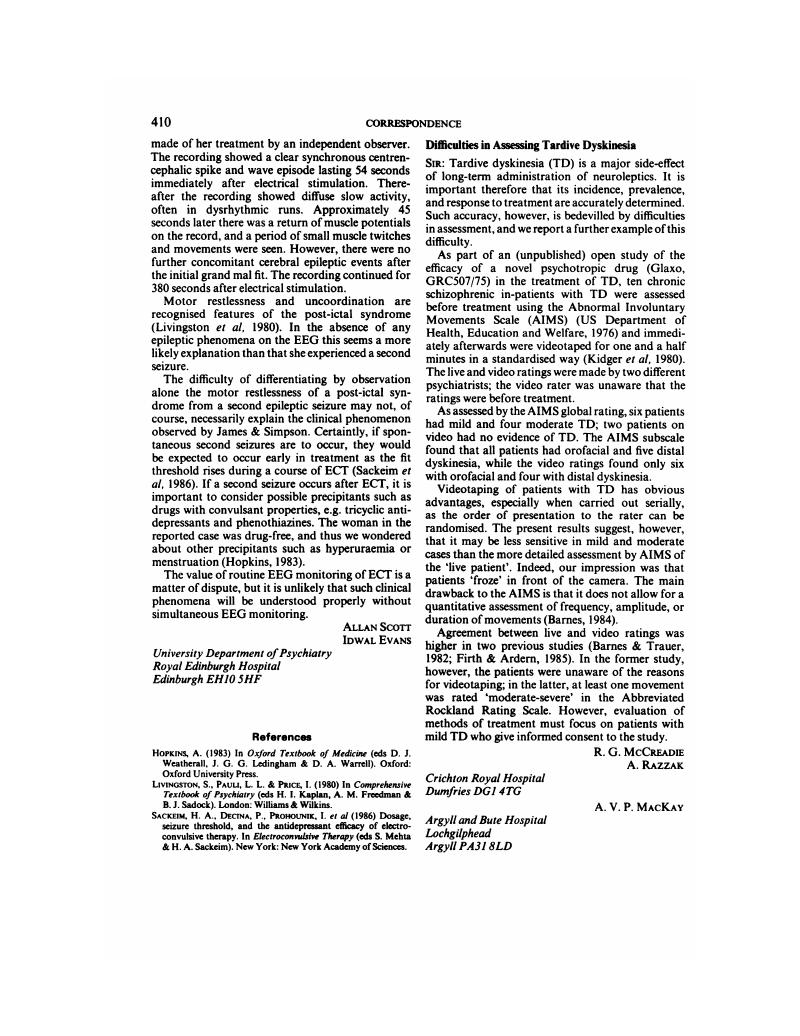No CrossRef data available.
Article contents
Difficulties in Assessing Tardive Dyskinesia
Published online by Cambridge University Press: 02 January 2018
Abstract
An abstract is not available for this content so a preview has been provided. As you have access to this content, a full PDF is available via the ‘Save PDF’ action button.

- Type
- Correspondence
- Information
- Copyright
- Copyright © 1987 The Royal College of Psychiatrists
References
Barnes, T. R. E. (1984) Rating tardive dyskinesia. British Journal of Psychiatry.
145, 338.Google Scholar
Barnes, T. R. E. & Trauer, T. (1982) Reliability and validity of a tardive dyskinesia videotape rating technique. British Journal of Psychiatry, 140, 508–515.CrossRefGoogle ScholarPubMed
Firth, W. R. & Ardern, M. H. (1985) Measuring abnormal movement in tardive dyskinesia: a pilot study. British Journal of Psychiatry, 147, 723–726.Google Scholar
Kidger, T., Barnes, T. R. E., Trauer, T. & Taylor, P. J. (1980) Subsyndromes of tardive dyskinesia. Psychological Medicine, 10, 513–520.Google Scholar
US Department of Health, Welfare and Education (1976) Abnormal Involuntary Movements Scale (AIMS). In ECDEU Assessment Manual (ed. W. Guy). Rockville, Maryland: US Department of Health, Welfare and Education.Google Scholar





eLetters
No eLetters have been published for this article.